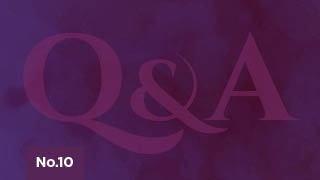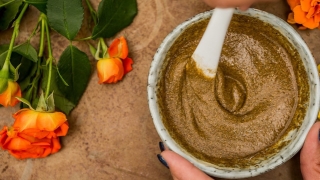
Q and A of the week - No.10
What is the purpose of Yoga?
Yoga is the purpose of Yoga. There is no separation between the various Yogas like Karma, Bhakta, Raja and Jnana Yoga.

![]() 4 minutes
4 minutes
Prana-ayama not Breath-Ayama!
The movement of energy towards matter is breath, the movement of energy towards consciousness is Prana.
One thing we all have to agree upon: Yogins, Rishis and Sages knew sanskrit!!
They most definitely knew how to write breath in sanskrit- shwasa. If they were pointing towards the discipline, management and technique of breath they would not call it Prana-ayama. I promise you, they would have called it "Shwasa-ayama" and then we would end up calling it "breath-ayama".
However, it is pranayama for a reason, because it is the direction, redirection, multiplication, expansion, consolidation (AYAMA) of prana into the pranic body so that 10 indriyas (5 sensory and 5 motor faculties) merge into 5 tanmtaras (sound, touch, taste, smell, sight), tanmatras into the sattvic manas (pure mind), sattvic manas into ahamkara and ahamkara into buddhi. Therefore the awareness is then of the sukshma (subtle) body. This process allows for the dissolution of the pinda-prana (microcosmic prana) into brahmanda-prana (macrocosmic prana).
Prana is the stream of energy that sweeps the nasal floor as the physical breath moves in and out of the lungs, it fills each pore of the body and each cell of the organ system, it is the the impulse that connects the gross body to the subtle body. It is present in breath, food, sunlight, water and the pancha tattvas (five elements: earth, water, fire, air and space).
The nature of prana is mother like- it is nurturing, nursing, caring, loving, nourishment and bringing things to life. The practice of pranayama is not to be feared but embraced as if you are hugging mother divine. We fear what we do not understand completely.
The texts have used many terms to elaborate the nature of prana
Commonly, pranayama is considered manipulation, stretching, holding of breath or maybe the name of some techniques like anuloma viloma, bhastrika, ujjayi etc.
The techniques are simply to remove the friction at the various points of entry of the prana into the body. For example: Anuloma viloma to remove friction at the level of nasal septum, nasal floor and sinuses; bhramari at the level of eye and nasal bridge, ujjayi at the level of vocal chords, shitali and sitkari at the level of oral apparatus; bhastrika at the level of chest; Kagi at the level of lips and throat and so on.
These techniques itself are not pranayama, their consequence is and could be. As one practices these techniques over a period of time, the vikrutis ( imbalances of dosas and thought constructs) at the entry points of breath and prana are reduced, making the breath dirgha (prolonged) and sukshma (subtle).
This distillation of prana from the breath is pranayama. Some signs when one is moving from breath manipulation towards pranayama:
Are you practicing breath-ayama or prana-ayama?
You may be practicing breath-ayama if:
So, go deeper into these concepts. There are not like an open book. One has to reflect, digest and dig for their real meanings and not merely find synonyms, easy short cuts and translations. The real translation of any text is through your practice and your experience.
May you be seated in the stillness or stirring that you experience post the practicing of the technique. May the Guru tattva awaken the prana and buddhi, may the atma tattva shine through you body, mind, speech and actions.
Om Pranaya Namaha! Om Apanaya Namaha! Om Samanaya Namaha! Om Udanaya Namaya! Om Vyanaya Namaha!
Om Shantih! Shantih! Shantih!
Want to know more about Pranayama? Join me Pranayama Training, Starting June 20, 2025.
✅ CEU's from Yoga Alliance and IAYT
✅ Attend Livestream/Watch Replay
✅ Apply for Partial Scholarships and Installment Payment
✅ 50% off for Repeat Participants and Indian Residents
STAY IN TOUCH
Start your FREE subscription to Indu Arora's newsletter to get more on Yoga and Ayurveda here
Say hello on Instagram
Subscribe to my Youtube Channel.

What is the purpose of Yoga?
Yoga is the purpose of Yoga. There is no separation between the various Yogas like Karma, Bhakta, Raja and Jnana Yoga.

The cellular intelligence (agni) of a specific organ/region/part of the body can be awakened by infusing the marma region with a paste of the specific ingredients. This helps in balancing the dosha, gunas and agni. Marma points are the bridge between the physical and the subtle body + read more

Join Angela and guest Indu Arora in this episode: Yoga + Ayurveda. In this conversation, Indu shares her 20+ years of wisdom of weaving Ayurvedic and Yogic practices together in a way which is simple and impactful.